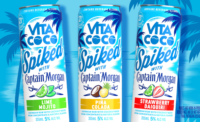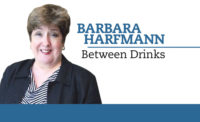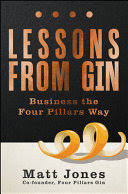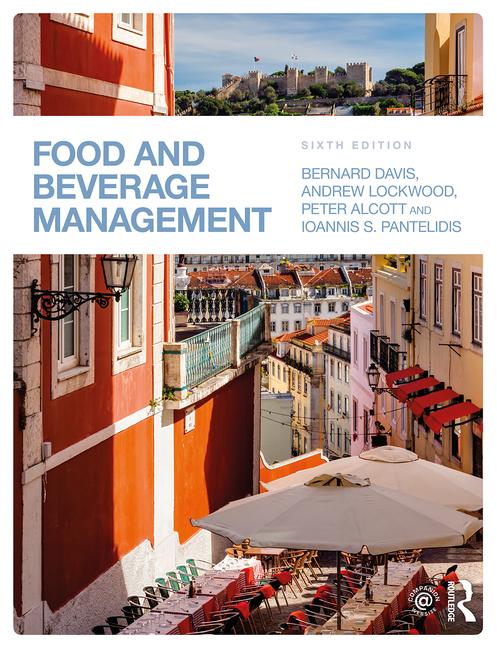Market Insights
Mixing up a profitable canned cocktail: Test for success – but not the old way
Proliferation of canned cocktails highlights importance of new testing models

Brown-Forman Corp. and The Coca-Cola Co. announced a global relationship to debut the iconic Jack & Coke cocktail as a branded, ready-to-drink (RTD) pre-mixed cocktail option.
Image courtesy of Brown-Forman Corp./The Coca-Cola Co.
This past summer, the beverage world sat up at Coca-Cola’s announcement that it was teaming up with Jack Daniel’s for a canned Jack and Coke, launching first in Mexico before expanding to the United States and beyond. This offering from two global icons was in the vanguard of a new industry expansion into the canned cocktail space. The Distilled Spirits Council of the U.S. records that pre-mixed cocktails was the fastest-growing spirits category in 2021, stealing share from among other beer and hard seltzer, which had its own Cinderella moment in 2020.
Jack and Coke has a double advantage: first, whiskey and cola is already a classic order for many. Second, both brands offer top-tier quality assurance for those wanting to access pre-mixed convenience. Most competitors won’t benefit from such strong associations on either count ― especially if they want to be a little different and edgy.
One thing’s for sure, more new ready-to-drink (RTD) cocktail launches will be executed this year and next than the market can ultimately support. When the dust settles, which RTDs will have earned a precious place in consumers’ repertoires, and which will have lost their stake? Product developers and marketers need to be able to put new ideas through a proven testing regimen that not only avoids the confirmation bias that naturally occurs in companies who have invested, but also offers validated indicators to the profit potential of new launches.
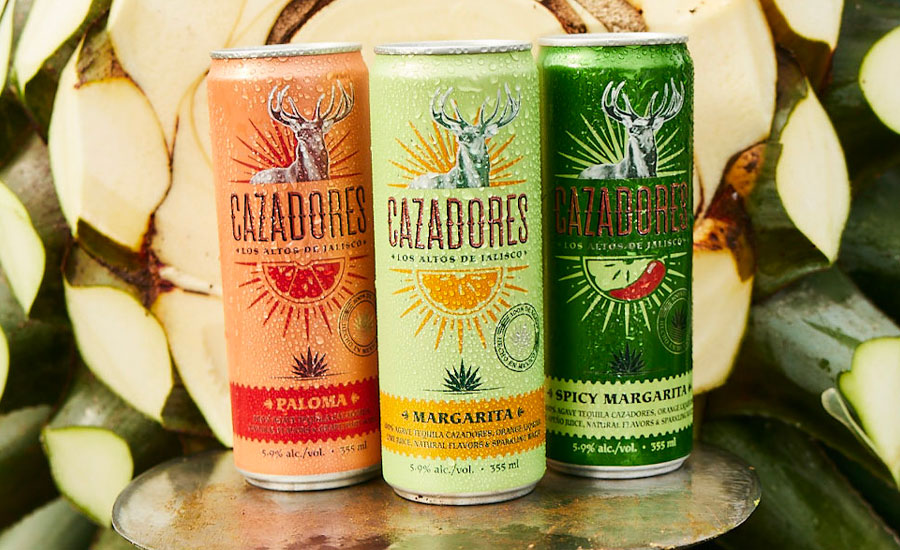
Image courtesy of Bacardi
Dragging idea testing into the Modern Age
No test predicts the future infallibly ― context plays too important a role when the action starts. However, there are some smart methodological advantages that can give sharper idea testing a significant edge over other methods.
One is testing that leverages the “wisdom of the crowd.” The crowd, perhaps counterintuitively, is significantly better at predicting winners in context than smaller groups of experts. The crowd is particularly better than loyal category buyers, people in qualitative greenhouse interviews, and especially better than colleagues who know the category and product well.
Occasionally, the best bet is obvious to all, but not often; that’s when the wisdom of the crowd is an ideal solution. The crowd succeeds in part because it tends not to have a vested interest in the innovation. It’s important to use a testing platform that leverages crowds of 500 individuals and has validation that these numbers give robust profit predictions.
The wisdom of the crowd is not without its foibles, however, and that’s where the second valuable lever comes in.
Crowds’ predictions can become more brittle when individuals are asked for too much personal information ― when they feel at risk of being judged. Or when strong cognitive biases are in play, as is common in political polling.
A sharp testing methodology takes steps to depersonalize the individual’s response, ideally in two ways. First, by investigating how a concept makes people feel, rather than asking what they might do about it. The latter question involves so many layers of what-iffery in the average brain, that companies might as well not bother asking it. Emotions happen several milliseconds faster than rational thoughts ― and happen in more places in the human body, too. As Daniel Kahneman notes, feeling comes far more readily to humans than thinking. Positive emotion correlates strongly with later engagement, which in turn allows profit potential predictions with greater accuracy.
Second, by removing the pressure on the individual to predict his or her own actions, testing can be further depersonalized, and instead predict the actions of others. It’s a bit like the crowd tapping the wisdom of an even larger crowd. The testing platform can gamify the predictive process by asking whether respondents would invest in the idea by buying or selling shares in the idea, never whether they would make a purchase. It’s usually a lot less pressure spending someone else’s cash than your own, even when that cash is notional.
Claimed purchase intent is a metric that’s increasingly shedding even lagging followers among marketing scientists and theorists. Only with the advent of better testing techniques can organizations be expected to let go of “definitely/probably buy” with confidence. Happily, better testing is available.

Image courtesy of Diageo North America
Who’s readying the next best seller?
There are many recent launches in the canned cocktail space (including those below) and testing with wise crowds reveals which have the most profit potential.
- Coca-Cola and Brown Forman’s Jack Daniel’s and Coca-Cola
- JuneShine Spirits’ canned cocktails
- Diageo’s Crown Royal canned cocktails
- Country Luau’s canned cocktails
- Molson Coors’ Simply Spiked Lemonade
- Betches’ Faux Pas canned cocktails
- Bacardi’s TAILS COCKTAILS
- RuPaul’s Drag Race’s House of Love canned cocktails and mocktails
It’s no surprise Jack and Coke landed the highest score; it also scooped the highest possible score: 5.9 stars on a testing scale from 1.0 to 5.9 stars. Respondents duly described Jack and Coke as “An all-time favorite,” “A classic” and “Two great brands combined.”
Molson Coors’ Simply Spiked Lemonade came in very strong with 5.3 stars. Its branding brings fame, and the product descriptor is a reminder that differentiation is rarely a better strategy in many categories than distinctiveness is. Popular comments included, “It’s a great summer drink,” and “Lemonade is a popular and refreshing flavor.” The median trade time (deciding whether to buy or sell shares in the product) was a brisk 6.6 seconds, with a large majority choosing to purchase rather than sell.
Rounding out the Top 3 is Crown Royal’s premium canned line up, scoring 4.9 stars. More than half (55%) of respondents felt happiness at meeting the brand in this form (Crown Royal is perennially extremely popular) and 26% felt surprised by the innovation. Surprise can be positive or negative, and testing also uncovers the reasons behind this emotion.
Meanwhile, newcomer Country Luau, which gives a percentage of annual sales back to non-profit organizations that support musicians, scored 2.7, a modest-looking score, yet actually impressive for a lesser-known brand. The Strawberry Daq Shack sparked feelings of surprise for its delicious-sounding and distinctive flavor promise.
Media company Betches recently launched a line of canned cocktails, and while some respondents noted they liked the bright purple of the tequila soda cocktail, and the differentiation, many also rationalized their willingness to sell shares because a lot of people don’t like the bitter taste of grapefruit. The combination of citrus juices with tequila is a less well-known or sought-after flavor combination in the United States. The Faux Pas cocktail scored 1.5 stars, just ahead of Bacardi’s TAILS, whose unusual bottle choice led a majority to feel that it resembled something other than an RTD cocktail ― a concentrate or even a bottle of hot sauce.
The right ingredients for success
With value sales of pre-mixed cocktails reaching $1.6 billion in 2021, the market ― and the marketing ― for this burgeoning category is only heating up. In an overwhelmingly at-home spirits drinking market like the United States, RTD cocktails might well stay in demand because of their enormous convenience, tempting variety of flavor profiles, and ― if brands can frame the affordability of canned cocktails against hand-poured cocktails in on-premise bars and restaurants ― accessibility. Bacardi and others are even encouraging bartenders and owners to choose RTDs for their speed and quality assurance on their drinks lists. The category has even spawned non-alcohol mocktail versions.
It's only going to become harder and costlier to launch successful new products into this competitive RTD melée. Gaining solid confidence in the profit potential of a new launch will inject confidence into teams, innovators and executives.
Trustworthy data, gained through validated methods that put cutting-edge behavioral science squarely at their heart is the key ingredient in blending a winning cocktail launch.
The wisdom of the crowd never tasted so good.
Looking for a reprint of this article?
From high-res PDFs to custom plaques, order your copy today!



